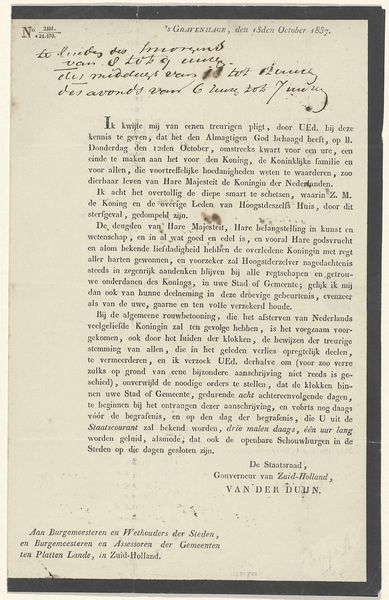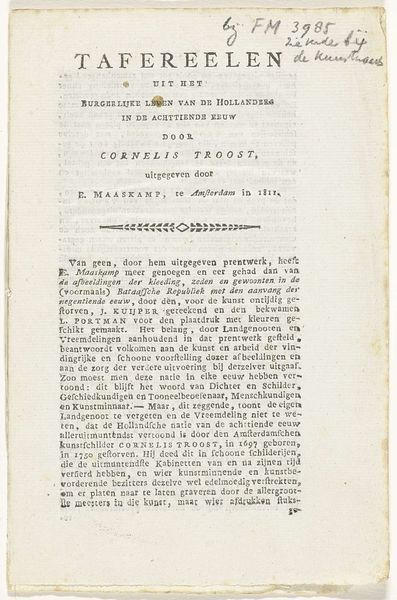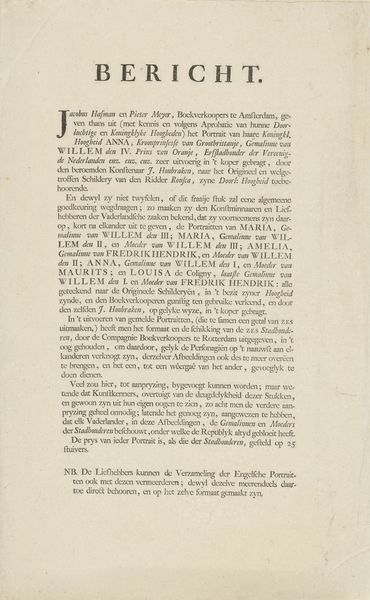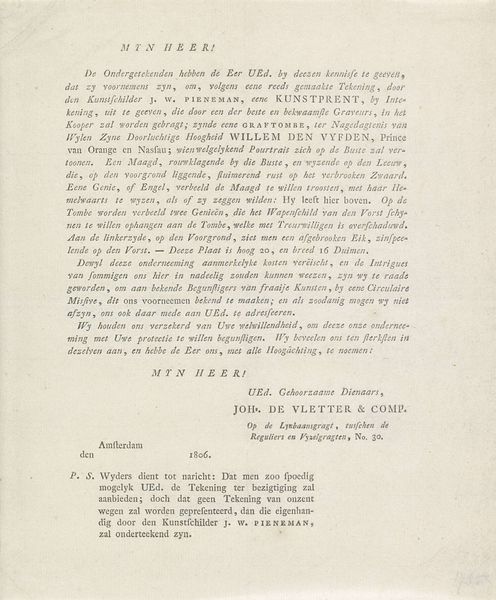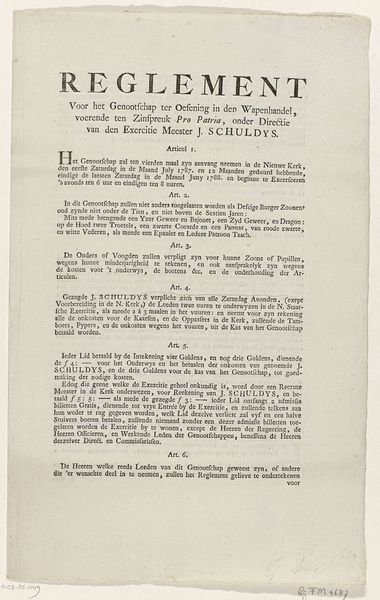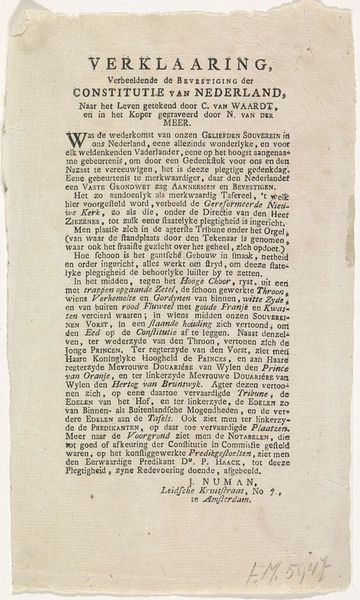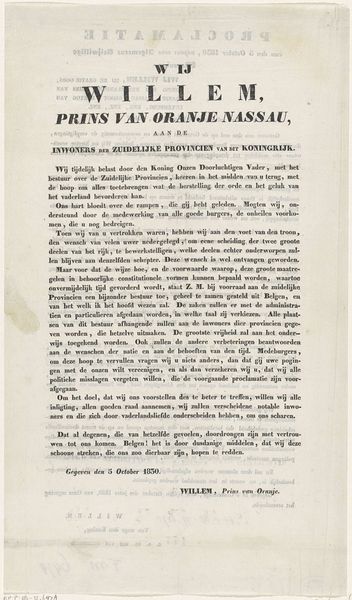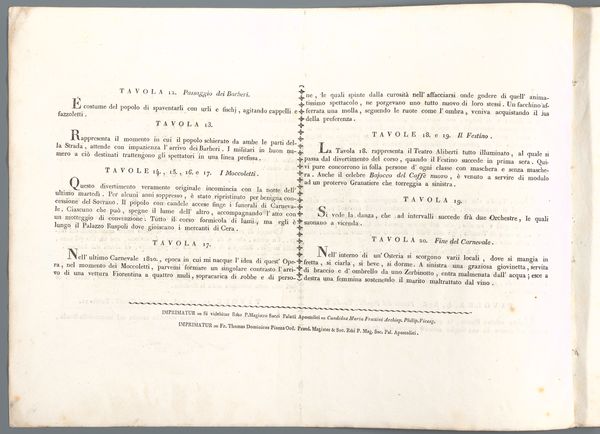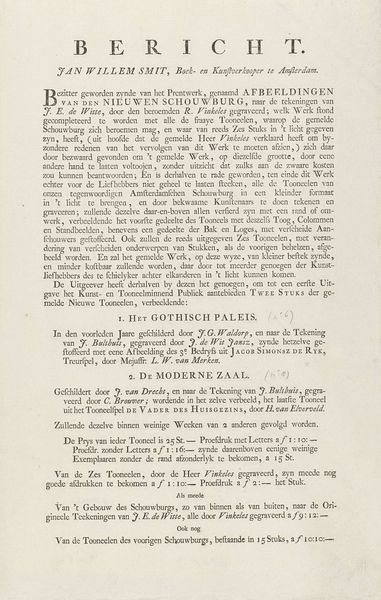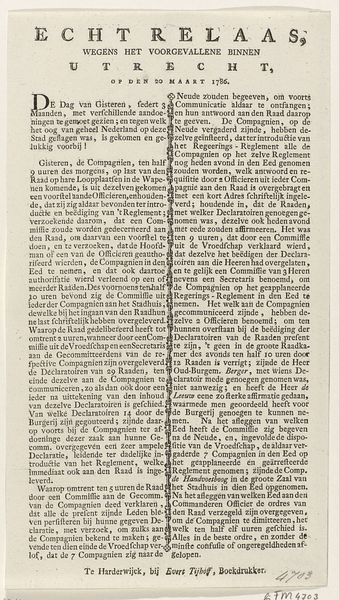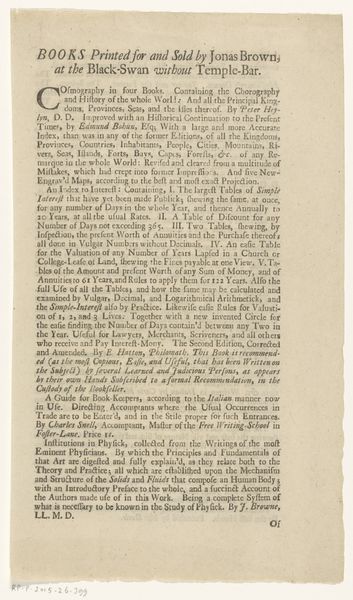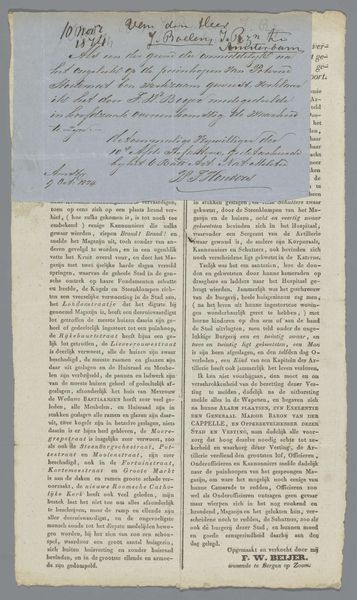
Alliantie tussen de Franse en Bataafse Republieken, decoratie op het Stadhuis op de Dam, 1795 (uitleg) 1795
0:00
0:00
print, typography
#
aged paper
#
dutch-golden-age
# print
#
editorial typography
#
paragraph style
#
typography
#
journal
#
script
#
thick font
#
history-painting
#
handwritten font
#
captioned image
#
word imagery
#
columned text
#
calligraphy
Dimensions: height 196 mm, width 167 mm
Copyright: Rijks Museum: Open Domain
Curator: This intriguing print, held at the Rijksmuseum, is titled "Alliantie tusschen de Fransche en Bataafsche Republieken," dating back to 1795. It's attributed to D. M. Langeveld. What springs to mind for you? Editor: It strikes me as visually dense—all those old-fashioned fonts fighting for attention! And the paper looks so brittle, like it might crumble at any second. There's something about that fragility that speaks to the political moment it represents, don’t you think? Curator: Absolutely. This print served as a propaganda piece, celebrating the alliance between the French and Batavian Republics. It attempts to visually encapsulate a complex political alignment. Notice the allegorical figures; Peace is personified as a young maiden, freedom embodied with an olive branch. Editor: That serpent representing eternity feels a bit ominous, coiled above that altar. And is that supposed to be a leopard being stepped on? It all seems a tad heavy-handed, this symbolism. Is that leopard representing… Curator: Indeed. The print utilizes loaded imagery; the leopard being trampled signifies Britain and aristocracy underfoot. The French Revolution promoted a new world order, and images like these, though somewhat cliché for us now, were powerful visual tools at the time to disseminate that ideology. It's an official decoration designed for Amsterdam's Stadhuis, which is worth remembering. Editor: A decoration, right—so this was intended for public consumption? To sway opinions? You see, that is precisely where the leopard being “stepped on” comes to life to me—as an intentional visual slight that stokes emotion. Talk about impactful imagery... albeit slightly cartoonish in its execution, perhaps! I can still admire its sheer intent to provoke. Curator: Precisely! It illuminates how political ideas are translated into accessible formats to influence the masses. To understand images such as these allows us to unpack the dynamics of alliance building—and, yes, political manipulation—during this revolutionary period. Editor: Understanding the function of such political visuals absolutely helps give meaning to these images now, removing the dust of ages to reveal what drove it—that revolutionary desire! Curator: Right! Analyzing it reminds us art doesn't exist in a vacuum, instead having been intertwined within the ebb and flow of socio-political tides.
Comments
No comments
Be the first to comment and join the conversation on the ultimate creative platform.
